Jones D.S.J., Pujado P.R. Handbook of Petroleum Processing
Подождите немного. Документ загружается.

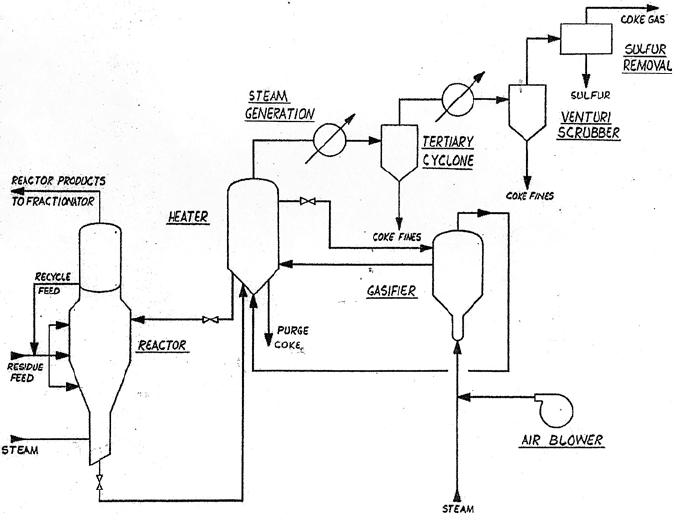
452 CHAPTER 11
Flexi-coking (fluid-coking)
Flexi-coking is a thermal conversion process licensed by Exxon Research and Engi-
neering Company. The process itself is an extension of the traditional fluid coking
process. The extension allows for the gasification of the major portion of the coke
make to produce a low Btu gas. The gasification step follows closely to the concept
used in the coal gasification processes.
Figure 11.5 below is a simplified flow diagram of the flexi-coking process.
Heavy residuum feed is introduced into the reactor vessel where it is thermally cracked.
The heat for cracking is supplied by a fluidized bed of hot coke transferred to the
reactor from the heater vessel. The vapor products of the reaction leave the reactor
zone to enter the scrubber section. Fine coke and some of the heavy oil particles are
removed from the cracked products in the scrubber zone and returned to mix with the
fresh feed entering the reactor. The reactor products subsequently leave the scrubber
and are routed to a conventional fractionating facility. Steam is introduced to the
bottom of the reactor to maintain a fluid bed of coke and to strip the excess coke
leaving the reactor free from entrained oil.
Figure 11.5. The flexi coker process.

UPGRADING RESIDUES 453
Table 11.2. Typical operating conditions and yields from
flexi-coking
Feed
Cut range,
◦
F TBP + 1,050
◦
API 3.0
Sulfur, wt% 6.0
Nitrogen, Wppm 4,800
Condradson carbon, wt% 27.7
Metals, Wppm 269
Yields based on fresh feed
H
2
S, wt% 1.45
C
4
s and lighter, wt% 10.29
C
5
to 370
◦
F, LV% 15.0
370–650
◦
F, LV% 16.7
650–975
◦
F, LV% 28.4
Purge coke, wt% 0.69
Coker gas, Scf/Bbl 10.79 (LHV = 127 Btu/Scf)
The coke leaving the reactor enters the heater vessel, where sufficient coke is converted
into CO/CO
2
in the presence of air. This conversion of the coke provides the heat for
cracking which is subsequently transmitted to the reactor by a hot coke stream. The net
coke make leaves the heater and enters the gasifier vessel. Air and steam are introduced
into the gasifier to react with the coke producing a low Btu gas consisting predomi-
nately of hydrogen, CO, CO
2
, and nitrogen. This gas together with some excess air is
transferred to the heater, and leaves this vessel to be suitably cleaned and cooled.
Flexi-coking is an extinctive process. By continuous recycle of heavy oil stream all
the feed is converted into distillate fractions, refinery gas, and low Btu gas. There is
a very small coke purge stream which amounts to about 0.4–0.8 wt% of fresh feed.
When suitably hydrotreated the fractionated streams from the flexi-coker provide good
quality products. Hydrotreated coker naphtha provides an excellent high-naphthene
feed to the catalytic reformer. Typical yields from a flexi-coker based on Arabian
residue are shown in Table 11.2.
This process is quite flexible as to the quality of the feedstock, most of the metals are
removed with the coke purge. Condradson carbon content of the feed does not affect
the yield as may be expected. Where an economic use can be found for the low Btu
gas, the process offers an attractive route for upgrading low quality fuel oil.
The principles of and correlations associated with thermal cracking processes
The soaking volume concept
The design of a thermal cracker is keyed to the configuration and temperature pro-
file across the heater and soaking drum or soaking coil. The degree of cracking is

454 CHAPTER 11
dependant on this temperature profile and the residence time of the oil under these
conditions.
The thermal cracking reaction is accepted as being of the first order thus it complies
with the equation:
In (conv) = (A)e
−E /RT × t
where
A, E, R = constants
t = reaction time
T = reaction temperature
The thermal cracking reaction occurs in the heater along a curve of increasing tem-
perature. In this concept of design the cracking progression is expressed by a soaking
volume factor (SVF) which is defined by the following equation:
F = 1/D
v
0
P
s
P
o
·
K
t
K
0
dv
where
V = coil volume
D = feed rate
K
t
= reaction rate constant at any given temperature
K
o
P
o
= standard reference value for K
t
and P
t
P
t
= pressure at a given point in coil
The standard reference temperature for thermal cracking is taken as 800
◦
F. A curve
giving value of K
t
/K
o
at a typical thermal cracking heater is given in Figure 11.6.
The curve was produced from experimental results using a normal accepted pressure
drop profile across the heater. For simplicity the curve is related to temperature versus
the factor K
t
/K 800
◦
F.
The soaking volume factor
The soaking volume factor (SVF) is related to product yields and the degree of
conversion. Definition of these items are:
r
The degree of conversion
The relationship of the soaking volume factor to the degree of conversion is given by
Figure 11.7. These curves were the result of experimental data from the laboratory
cracking of many feedstocks. The family of curves given in Figure 11.7 demonstrates
the comparative ease of cracking the large molecular structure of short residue to
that of increasing wax distillate content. Conversion is measured by the result of
gas and gasoline (to an end point of 257
◦
F) produced.
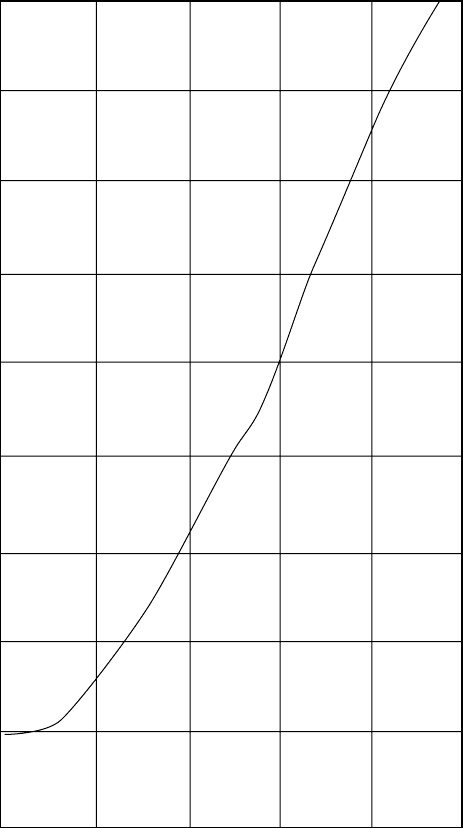
UPGRADING RESIDUES 455
Coil Temperature °F
K
T/ K800°F Ratio
8.0
7.0
6.0
3.0
4.0
5.0
2.0
1.0
800 820 840 860
880 900
Figure 11.6. Temperature versus the K
T
/ K
800
◦
F
ratio.
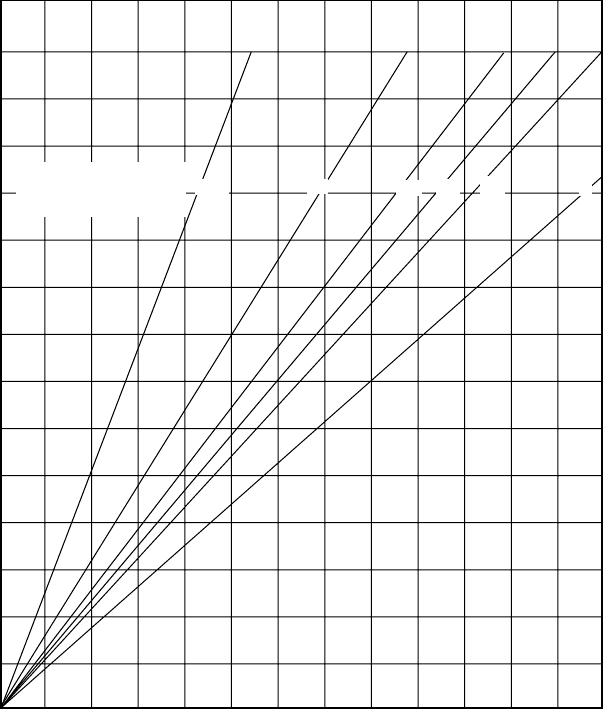
456 CHAPTER 11
0.14
0.12
0.10
0.08
0.06
0.04
0.02
02 4 6 81012
Soaking Volume factor (SVF).
% Conversion Gas and Naphtha to 255 °F cut point.
100 70 50 40 30 0
Weight % Wax Distillate
662°F to 1022°F Cut
in Residuum Feed.
Figure 11.7. Soaking volume factor (SVF) versus wt% conversion.
r
Product yields
A family of curves given below as Figures 11.8 and 11.9 shows the relationship of
the soaking volume factor (SVF) to the yield of products of thermal cracking. Fig-
ure 11.8 shows the yields when cracking wax distillate 662–1,022
◦
F portion of the
feed. Figure 11.9 shows the yields when cracking the bitumen portion of the feed.
Both series of curves relate to the soaking column factor.
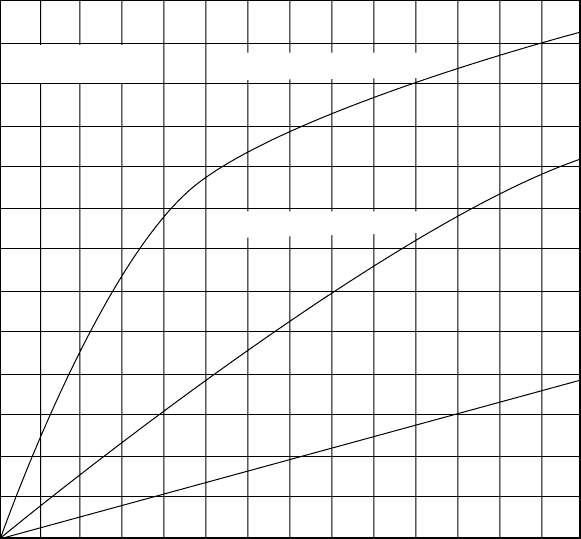
UPGRADING RESIDUES 457
Gas.
Soaking Volume Factor
24.0
20.0
16.0
12.0
8.0
4.0
0.120.100.080.060.040.020 0.14
Percent Weight on Residue Feed
Residue Feed
is a +1022°F cut
Gas Oil to 662°F Cut point
Naphtha to 390°F Cut Point
Figure 11.8. Conversion yields from wax distillate versus SVF.
r
The zone of critical decomposition
Experimental data shows that cracking and stability of the cracked product varies
with the characteristics of the crude source material and boiling range. Figure
11.10 demonstrates this criteria as a relationship with the Watson characterization
factor ‘K ’of the feed stock.
The shaded area of the figure is the range in which the major portion of cracking occurs.
Above this area the cracked residue becomes unstable and precipitates sediment when
stored. It is undesirable to operate above this zone in most cases where a cracked
residue is required.
Discussion of the concept
This is not a new concept for it has certainly been accepted as a basis for design
since the late 1950s. To date there are at least six visbreakers and/or thermal crackers
to the author’s knowledge that were designed using these parameters and are still in
commercial use. In evaluating this concept, it is interesting to note the following test
run data compared with that calculated using SVF concept (Table 11.3).
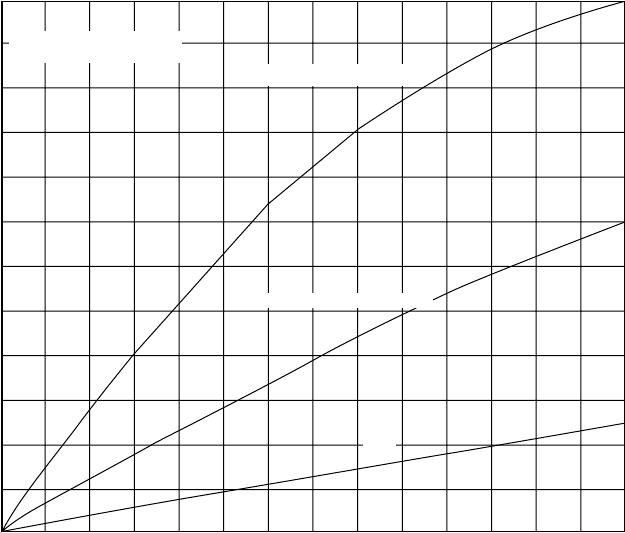
458 CHAPTER 11
Soaking Volume Factor
Percent Weight on Distillate Feed
12.0
10.0
8.0
6.0
4.0
2.0
0.140.120.100.080.060.040.02
Distillate Feed
is a 622°F to 1022°F cut
Gas Oil to 662°F cut point
Naphtha to 390°F cut point
Gas.
Figure 11.9. Conversion yields from residuum versus SVF.
It can be seen that the data calculated compare well with those actually observed
under test conditions. One interesting point in the test run data is the high coil outlet
temperature that was used. As this is slightly above the critical decomposition zone
for this type of crude it would lend one to suspect that the cracked residue would be
unstable. There was no recorded evidence of this however.
An example calculation using the SVF concept is given as Appendix 11.1 of this
chapter.
‘Deep oil’ fluid catalytic cracking
Up to the late 1980s feedstocks to FCCU were limited by characteristics such as
high Conradson carbon and metals. This excluded the processing of the “bottom of
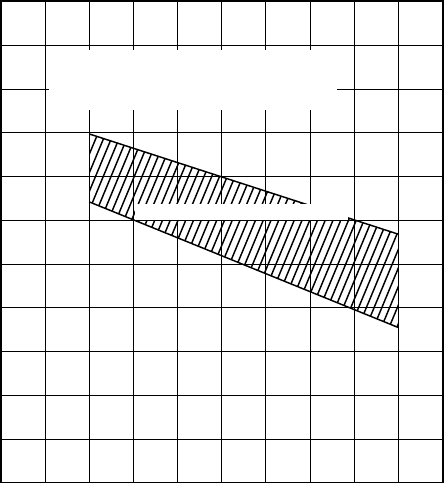
UPGRADING RESIDUES 459
11.0 11.2 11.4 11.6 11.8 12.0
Watson Characterization Factor ‘K’
750
800
850
900
950
Temperature °F
Poor fuel oil product quality results
from subjecting the feed to temperatures
above the Critical Zone.
Zone of Critical Decomposition
Figure 11.10. Zone of critical decomposition.
the barrel”residues. Indeed, even the processing of vacuum gas oil feeds was limi-
ted to
Conradson carbon < 10 wt%
hydrogen content > 11.2 wt%
metals Ni + V < 50 ppm
During the late 1980s significant research and development breakthroughs produced
a catalytic process that can handle residuum feed.
Feed stocks heavier than vacuum gas oil when in conventional FCCU tend to increase
the production of coke and this in turn deactivates the catalyst. This is mainly the
result of:
r
A high portion of the feed that does not vaporize. The unvaporized portion quickly
cokes on the catalyst choking its active area.

460 CHAPTER 11
Table 11.3. Comparison of test run data calculated using SVF method
Test run Calculated
Feed stock Kuwait residue + 350
◦
C
Conversion wt% 11.07 10.5
Feed rate 11 500 12 000
Heater inlet press PSIG 512 Not calculated
Outlet press PSIG 252 Not calculated
Conversion inlet
◦
F 548 590
Conversion outlet
◦
F 651 655
Heater outlet
◦
F 880 860
Soaking drum outlet press PSIG 242 250
Inlet temperature
◦
F 870 850
Outlet temperature
◦
F 849 830
Yields
Gas wt% 4.4 4.58
Total distillate wt%* 33.59 32.43
Residue wt% 62.01 62.99
*This is total distillate C
5
to 350
◦
CEP.
r
The presence of high concentrations of polar molecules such as poly cyclic aromatics
and nitrogen compounds. These are absorbed into the catalyst’s active area causing
instant (but temporary) deactivation.
r
Heavy metals that poison the catalyst and affect the selectivity of the cracking
process.
r
High concentration of poly-naphthenes that dealkylate slowly.
In FCCU that process conventional feedstocks cracking temperature is controlled
by the circulation of hot regenerated catalyst. With the heavier feedstocks, with an
increase in Conradson carbon, there will be a larger coke formation. This in turn
produces a high regenerated catalyst temperature and heat load. To maintain heat
balance therefore catalyst circulation is reduced leading to poor or unsatisfactory
performance. Catalyst cooling or feed cooling is used to overcome this high catalyst
heat load and to maintain proper circulation.
The extended boiling range of the feed, as in the case of residues, tends to cause an
uneven cracking severity. The lighter molecules in the feed are instantly vaporized
on contact with the hot catalyst, and cracking occurs. In the case of the heavier
molecules vaporization is not achieved so easily. This contributes to a higher coke
deposition with a higher rate of catalyst deactivation. Ideally, the whole feed should
be instantly vaporized so that uniform cracking mechanism can commence. The mix
temperature (which is defined as the theoretical equilibrium temperature between the
uncracked vaporized feed and the regenerated catalyst) should be close to the feed
UPGRADING RESIDUES 461
dew point temperature. In conventional units this is about 20–30
◦
C above the riser
outlet temperature. This can be approximated by the expression
T
M
= T
R
+ 0.1H
C
where
T
M
= the mix temperature
T
R
= riser outlet temperature
◦
C
H
C
= heat of cracking in kJ/kg
This mix temperature is also slightly dependent on the catalyst temperature.
Cracking severity is affected by poly cyclic aromatics and nitrogen. This is so because
these compounds tend to be absorbed into the catalyst. Rising the mix temperature
by increasing the riser temperature reverses the absorption process. Unfortunately, a
higher riser temperature leads to undesirable thermal cracking and production of dry
gas.
The processing of residual feedstocks therefore requires special techniques to over-
come:
r
Feed vaporization
r
High concentration of polar molecules
r
Presence of metals
Some of the techniques developed to meet heavy oil cracking processing are as fol-
lows:
r
Two stage regeneration
r
Riser mixer design and mix temperature control (MTC) (for rapid vaporization)
r
New riser lift technology minimizing the use of steam
r
Regenerated catalyst temperature control (catalyst cooling)
r
Catalyst selection for:
➢ Good conversion and yield pattern
➢ Metal resistance
➢ Thermal and hydro-thermal resistance
➢ High gasoline RON
These are discussed in the following items.
Conventional fluid catalytic crackers can be revamped to incorporate the features
necessary for heavy oil (residual) cracking. World wide, there were approximately
some 23 FCC residue units in operation (to the beginning of 1992), having a total
processing capacity of 760,000 BD.
